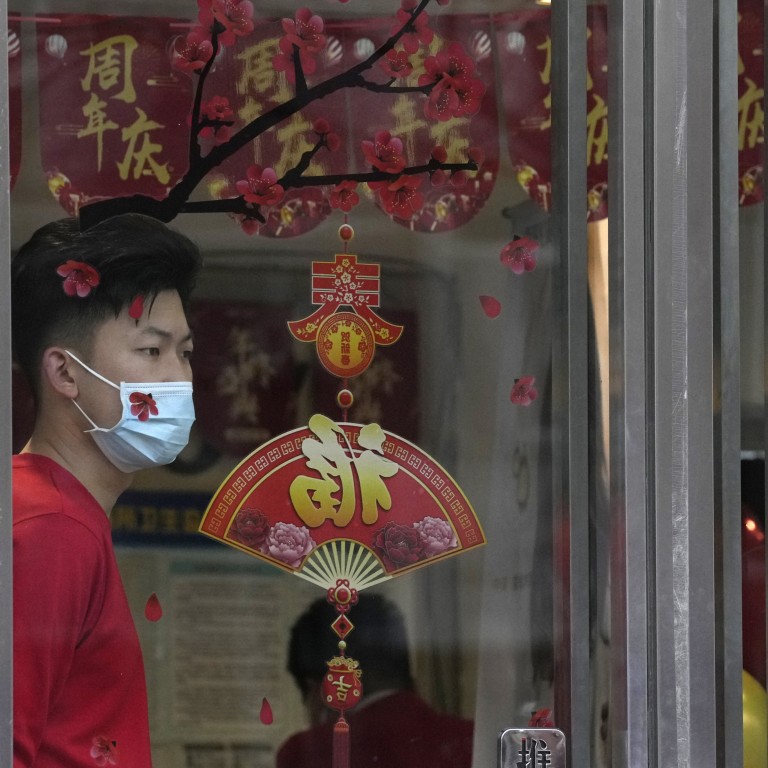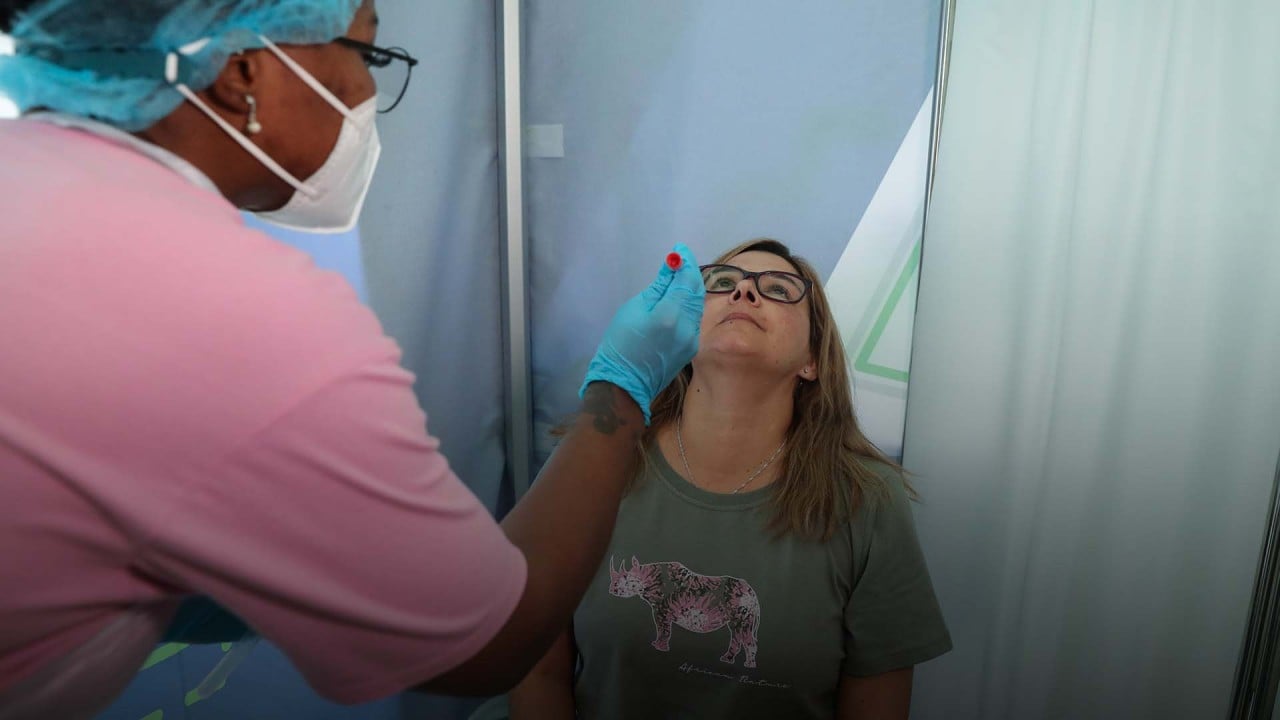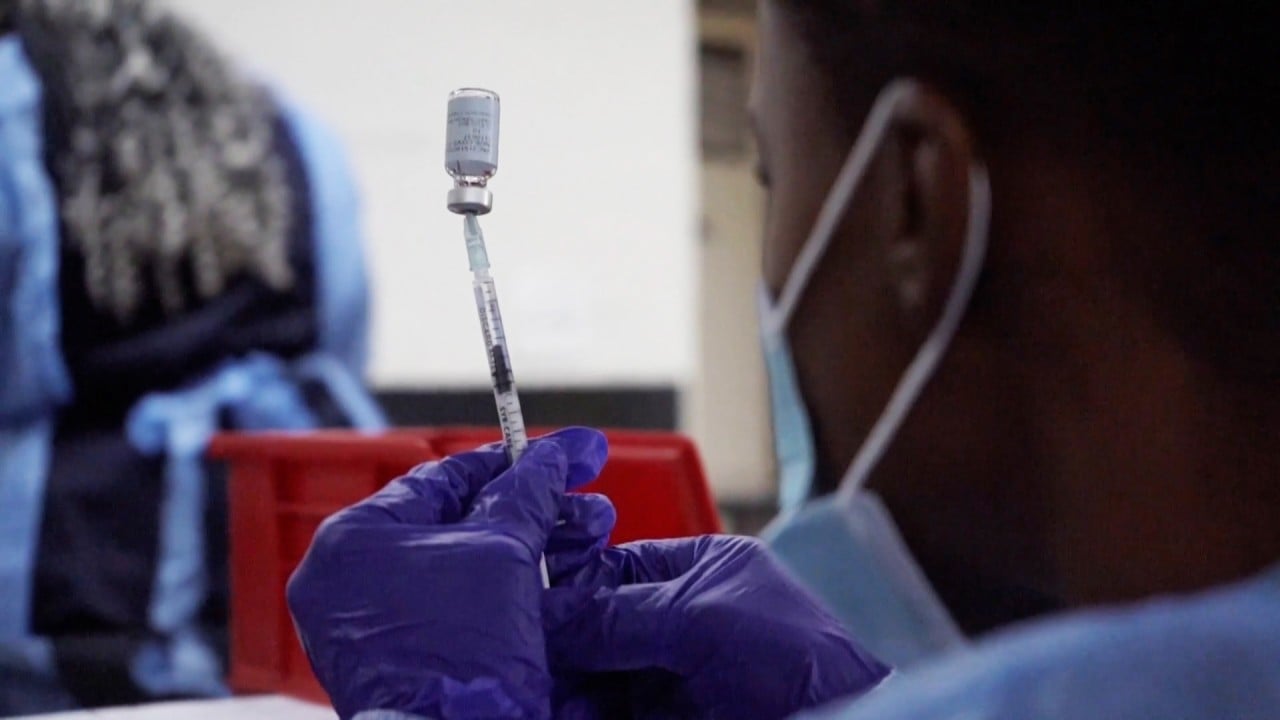
China’s zero-Covid stand vindicated as Omicron shuts borders around the world
- Omicron is ‘booster shot’ for zero-tolerance policy, observer says, as countries race to impose border and travel curbs to keep out new strain
- But even if China manages to avoid devastation, the variant could add to the case for postponing any reopening plans
But in China, it was business as usual.
They put in place pre-emptive defences and travel restrictions designed to keep the variant out, rather than betting on Omicron being a flash in the pan. It’s a calculus Beijing did not have to consider.
Omicron likely on its way but expert certain zero Covid will save China
The emergence of the highly mutated form of the virus has provided some vindication for China’s zero-Covid approach, which saw the country close its border indefinitely at the beginning of the pandemic, and intensify its stringent curbs ever since.
While other places pivot to living alongside the virus, China has prioritised weeding out every last infection, saying the health of the population is its main priority – and economic benefits will follow.
“Omicron is a booster shot for Covid zero,” said Huang Yanzhong, a senior fellow for global health at the New York-based Council on Foreign Relations. “If Western countries are walking back on their reopening and closing borders, they’ll lose the grounds for accusing China of sticking to what they say is an unsustainable and incorrect approach.”
The country’s state-backed newspaper, Global Times, has already declared China the most likely place to avoid devastation from Omicron.
While the verdict is still out on whether the startling genetic changes found in Omicron justify the pre-emptive hunkering down, some analysts said China’s approach may offer benefits.
Kinger Lau, a strategist with Goldman Sachs, said the economic fundamentals and ongoing Covid-19 curbs in the world’s second largest economy put it in a better position to face the new variant.
Still, the zero-tolerance strategy China is clinging to has come under growing criticism from abroad and at least partly from within, and goes well beyond rigid border closures to include a growing suite of disruptive curbs.
While it has shielded the world’s most populous country from the rampant infections and massive death tolls that have ravaged other parts of the world, the zero-Covid strategy has taxed China and its people, with the weeks-long quarantines and re-entry procedures meaning they are effectively locked inside the country.
It has become harder, and less successful, over time. The handful of Delta flare-ups that have emerged since May are requiring evermore stringent measures to subdue.
After vowing to keep out Covid-19, China does not have many options. The country’s approach is a one-size-fits-all strategy, said Nicholas Thomas, an associate professor at City University of Hong Kong who has edited several books on foreign policy and public health. The lack of efficient vaccines gives China little room to manoeuvre, he said.
The inactivated shots developed by the domestic firms Sinopharm and Sinovac Biotech are less effective at preventing symptomatic infections than mRNA shots in studies, though they have slashed hospitalisation rates and deaths.
Still, relatively little solid data on how these shots work against the Delta variant has been published compared to their rivals in the West.
Sinovac and world’s Covid-19 vaccine makers ‘ready’ to produce Omicron jab
No countries have reinstated the same level of punishing lockdowns and curbs on personal movement that China continues to deploy, and few would try to impose the other measures in its arsenal like invasive searches and personal tracking.
Even the new travel restrictions among countries trying to keep Omicron out fall far short of those China uses to isolate itself from the broader world, where Covid-19 continues to circulate.
Omicron and global Covid-19 surge set to test China’s health defences
The mitigation measures are having benefits that go beyond Covid. A study conducted by researchers in mainland China and Hong Kong found that lockdowns enacted in the months following the virus’ emergence in Wuhan prevented 347,000 deaths unrelated to Covid-19.
The lower mortality rates were tied to the stringent curbs, including changes in behaviour such as mask-wearing and social distancing, that led to reduced air pollution, better hygiene and fewer traffic accidents, according to the study published in the journal Nature.
“The results suggest that virus countermeasures not only effectively controlled Covid-19 in China but also brought about unintended and substantial public health benefits,” the researchers said.
In China – where Omicron is least likely to gain an immediate foothold given the curbs already in place – the variant could push back even further any timeline to reopen to the rest of the world, Huang at the Council on Foreign Relations said.
The variant could add to the case for postponing any reopening plans until after a major Communist Party summit in the second half of 2022 that is expected to solidify a third term for Chinese President Xi Jinping.
“Delta and Omicron together represent a major threat to China’s health security,” Thomas said. “Without alternative solutions, China is effectively locked into this trajectory well into mid-to-late 2022.”





